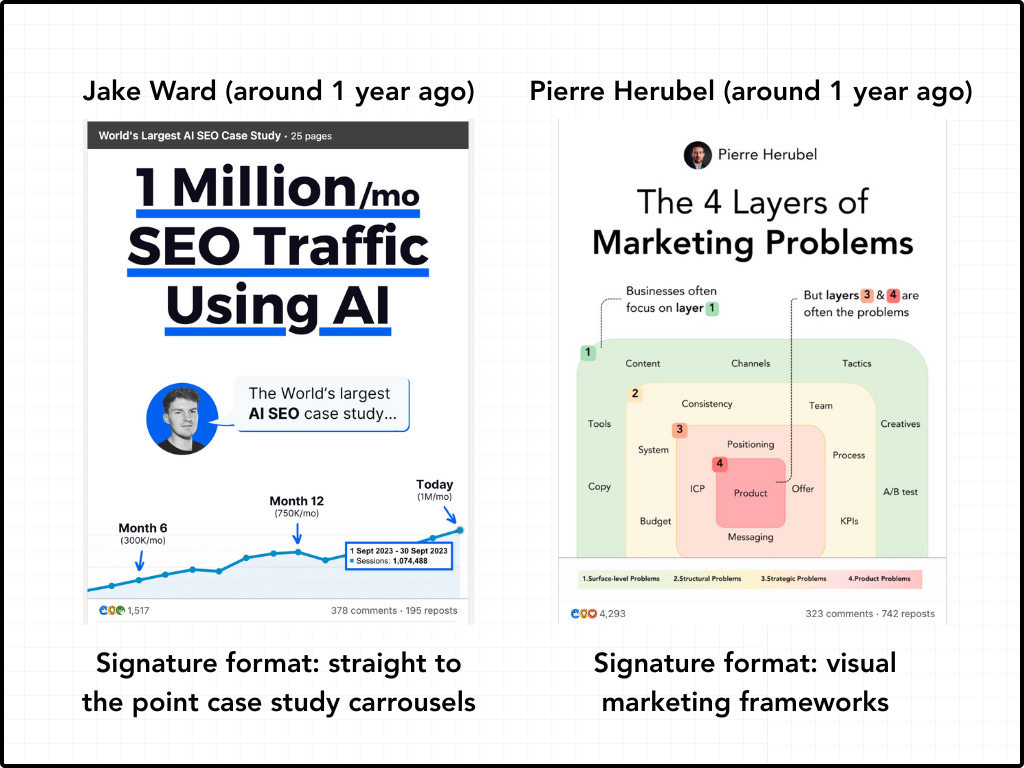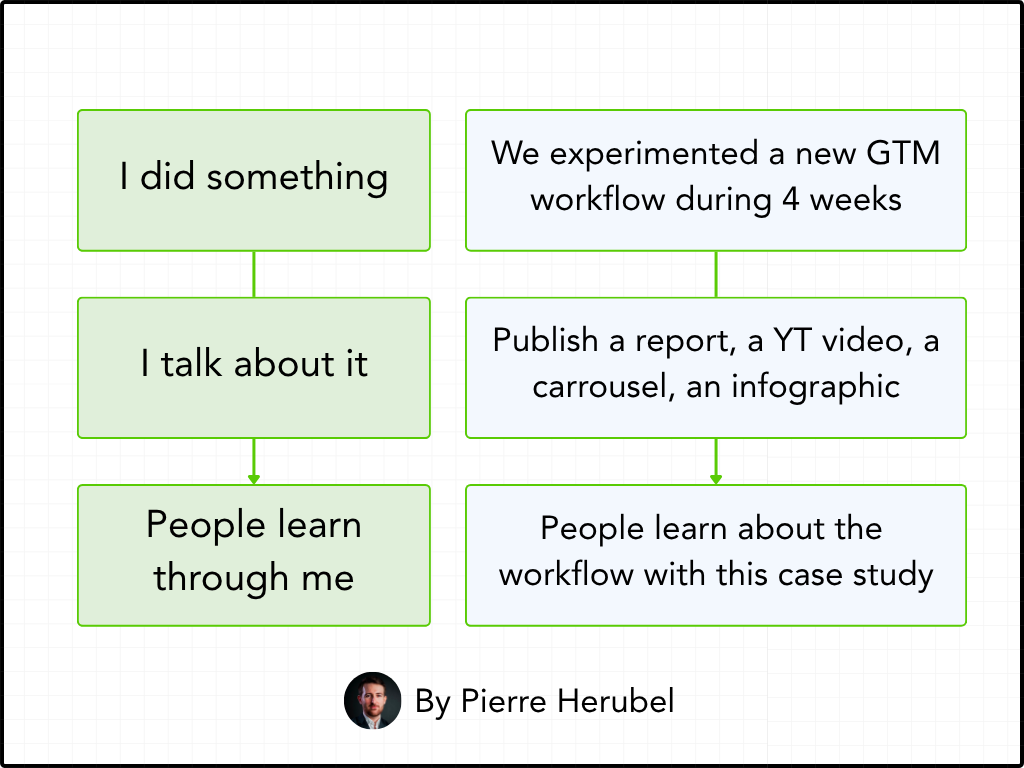Hey welcome to this edition 👋
I’m on a quest to help you create better content for your business.
So you can get more impressions, engagement, followers, leads, and revenue.
And for this, I need to help you with your content insights.
So in this edition, you’ll learn:
Why unique insights are your best differentiator in 2025
The 4 levels of insights and what you should focus on
How to craft content from lived-experiences, not theory
I Studied 100+ Personal Brands, these 5 Strategies work best (watch my latest YouTube video)
Back to the topic of the day; unique insights in content
In 2025, content is a red ocean because there are no entry barriers.
More competition: there are more businesses and creators producing content but the attention of people remains the same.
More AI content: people are getting tired of AI content (they can spot it from far) and ultimately they are more reluctant to read content in general.
Frameworks overload: millions of people shared frameworks for the past 3 years (including me) and this creates an overdose.
In a red ocean of content, the two long-term differentiators are insights and strategy.
In 2025, every creator is fighting in the same red ocean of content. Algorithms are crowded, attention is scarce, and most posts sound the same. Formatting, hooks, or persuasion tactics can help you stand out for a moment, but they can’t sustain performance.
The best long-term differentiators are insights and formatting.
First, your unique differentiation comes from the unique insights you share in your content
Your unique differentiation doesn’t come from your posting frequency, your hooks, or how polished your content looks. It comes from the unique insights you share: the way you interpret reality, connect patterns, and translate experience into perspective. That’s what turns ordinary content into something memorable.
Second, your unique differentiation comes from your signature formats (the problem is you can be copied)
I’ll publish a complete newsletter edition on this topic soon (so subscribe). But in a nutshell, you need to find a signature way to share your insights and ideas. Below you can find 2 signature formats from Jake Ward and me.
In my next newsletter, I’ll analyze big creators’ signature formats on LinkedIn and YouTube so make sure to subscribe to receive the next edition
I categorize insight quality into a 4-level hierarchy from commoditized to top 1%
Level 1 - Commoditized Insight: The generic, overused ideas everyone repeats. Safe and predictable, but forgettable.
Level 2 - Common Insight (2nd zone insights): Recognized but still useful knowledge. True, but familiar. It reinforces what people already know.
Level 3 - Strategic Insight: Fresh, pattern-based observations that feel new. They connect dots others haven’t noticed yet.
Level 4 - The 1% Insight: Rare, perspective-shifting truths born from deep experience. They make your audience see differently.
Not every insight is equal because some are commoditized:
There is an insight hierarchy: not every idea or observation has the same strategic value. Some are common (everyone knows them), while others are rare and high-leverage, because they reshape how people see a problem or opportunity. Commoditized insights repeat what’s already obvious or generic in your industry.
Here are some commoditized insights that you have read 1000s times:
“Consistency is key” or “branding is important”
“Hooks are the most important” or “Your customer comes first.”
“Focus on providing value.” or “People buy from people.”
“Failure is part of the journey.” or “Your network is your net worth.”
While all these insights are true, they have been repeated so many times that you cannot create a strong differentiation by using them in the center of your content strategy. That said, you can still use them as the end message of a lived-experience.
👉 If you want to learn how to create high-performing content, join The Content-First Ecosystem.
You’ll get access to my entire system for LinkedIn/YouTube/Substack, templates, community, and live Q&A sessions to help you turn your ideas and experiences into content that actually drives revenue.
→ Click here to get more information and join
You should aim to share strategic insights and 1% insights:
You can’t always share top 1% insight (or you would need to be full time on your content) but you can prioritize sharing strategic insights.
Most creators stay between Levels 1 and 2 but the best brands operate at Levels 3 and 4.
Create experience-based content, not theoretical
What best posts have in common is that they’re experience-based, not theoretical. They come from real observations, experiments, and lessons but never from recycled advice or AI-generated insights.
In 2025, there is only ONE way to perform in a red ocean of content:
With unique lived experiences, you will be able to create this kind of content:
An anecdote that reframes how we see a problem
An inspirational idea that makes people take action
A transformational story that shows what to do
A lived experience that’ll help your audience
A market perspective that drives innovation.
The best ideation process is not “I know something → publish content”, it’s “I DID something → publish”
Here is a 3-step process to create experience-based content
Do the Work: Run a real experiment, project, or action in your business.
Extract insights: List 1 to 3 takeaways: what worked, what failed, what surprised you, why you think it happened.
Package It: Turn the insight into a story, case study, anecdote, lesson, or framework (the list is not exhaustive).
👉 130+ members are learning how to generate revenue with content in The Content-First Ecosystem.
You’ll get access to my entire system for LinkedIn/YouTube/Substack, templates, community, and live Q&A sessions to help you turn your ideas and experiences into content that actually drives revenue.
→ Click here to get more information and join












Top. Absolutely top-notch practical strategic advice. Tuned in. Thankful. Happy to see you do have both vision and insight.